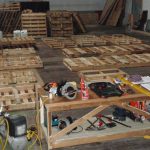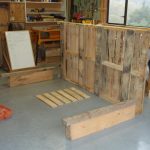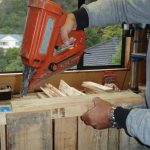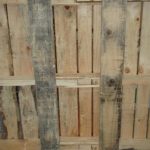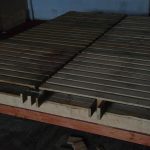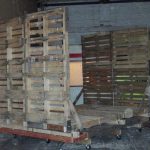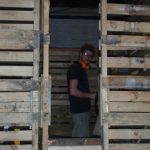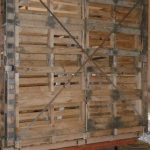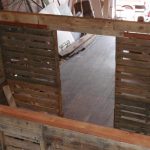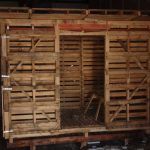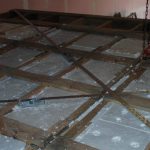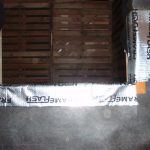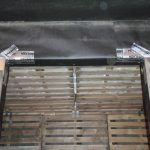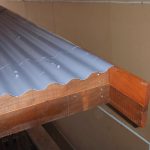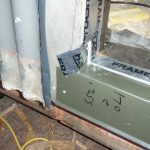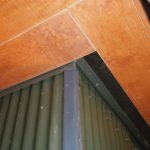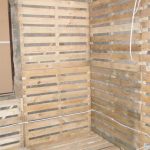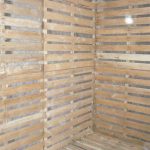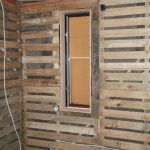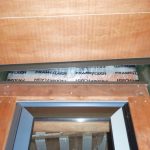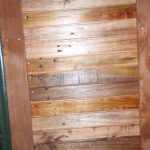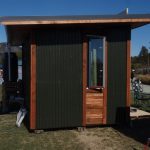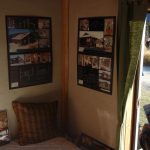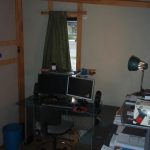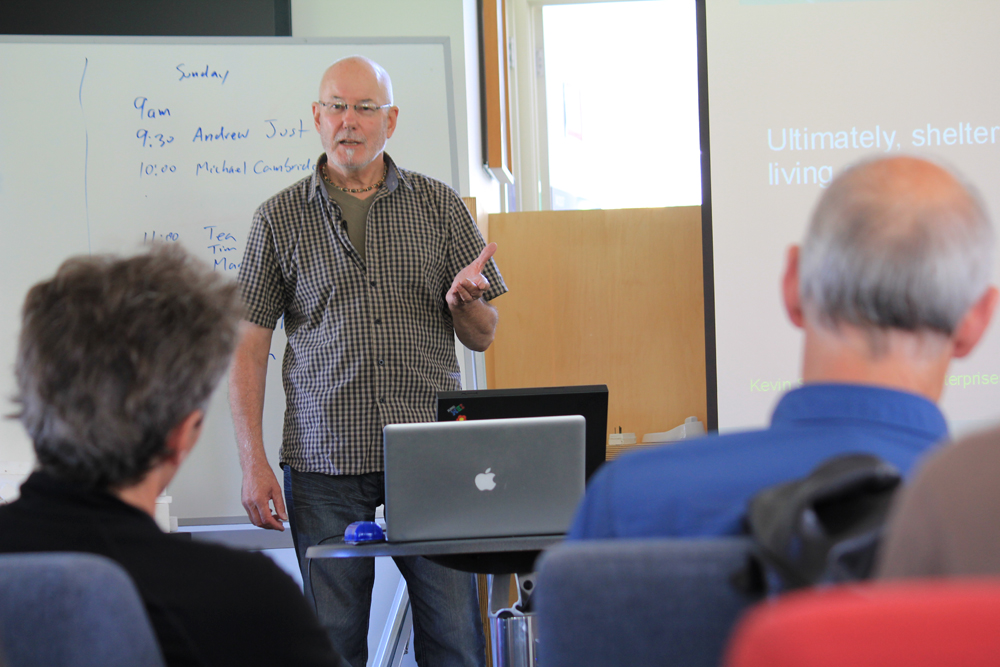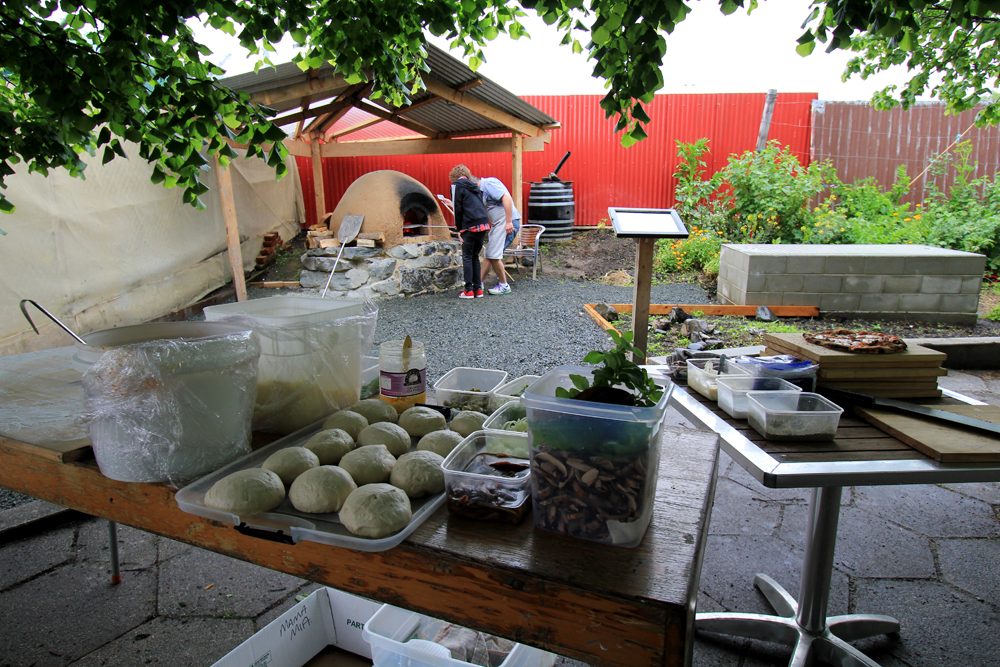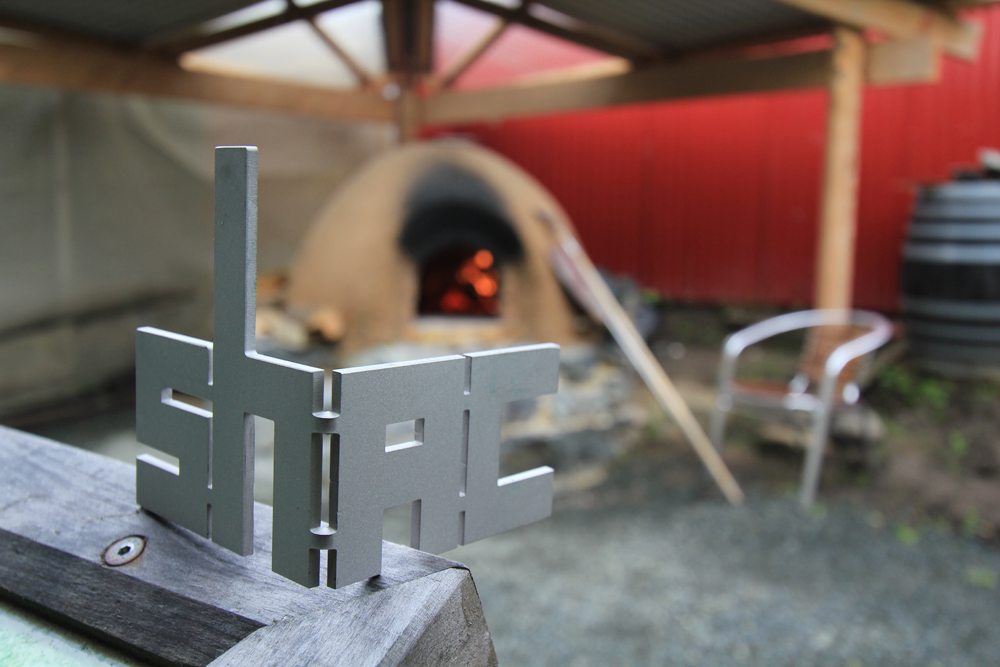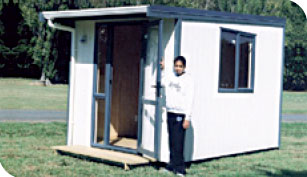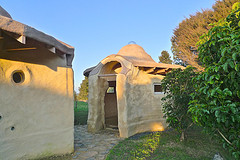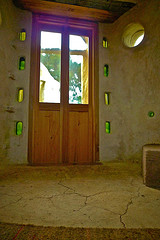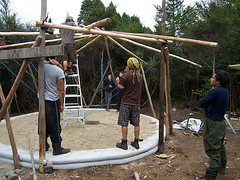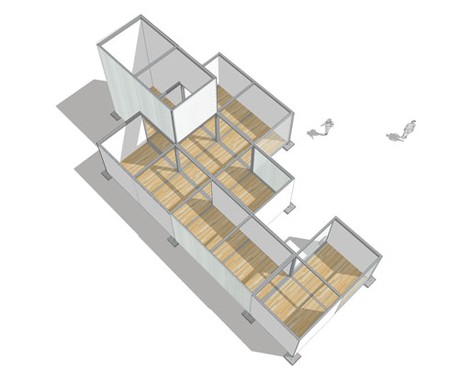For more information, contact Mark Fielding at Ecotect
Category: MicroArchitecture

SHAC Awards for 2011:
- Commercialisation – Ben and Chris from SPACE MoveableRooms.co.nz
- Practical Innovation – Mark Fielding from Ecotect
- Design – Andrew Just from CPIT and F3 Design
- Pushing the Boundaries – Bomun Bock-Chung from Awhi Farms
- Youth Participation and Supreme Awards -Tom Malpass, Carpentry Tutor, Wintec, Video of student introductions. Otago Daily Times article >>>
[su_media url=”https://vimeo.com/32888930″]
|
Speaker |
Topic |
|
Bruce Thompson |
Experience building lightweight concrete infill construction for 15 years (egg cartons are not waste, they are a construction material) >>> |
|
Liz Buxton |
Designs from Sudan and Dunedin |
|
Thomas Malpass |
Simple buildings with trainee builders at Wintec in Hamilton |
|
Andrew Just |
A modular and very portable initiative designed to create a home for Christchurch artists, and a 15m2 accommodation unit built into a grain silo. >>> |
|
Michael Cambridge |
Marlborough Housing Trust “Snug” – a high quality work space, bedroom or sauna using precut pine heartwood, and other European and North American examples. >>> |
|
Chris and Ben |
Developing and launching SPACE Moveable Rooms. Why we designed the way we did / transport constraints / commercial considerations / how the market is responding / new developments. >>> |
|
Bomun Bock-Chung |
Creating the best low cost, sustainable structures that are easy to build. >>> |
|
Chris Moller |
Developing a click-raft system and urban scale initiatives such as ‘city on a roof. see click-raft.blogspot.com or click-raft.com www.cityonaroof.net www.hansafreehavens.net |
|
Mark Fielding |
Building homes using pallet frames, and other recycled waste materials in an effort towards marrying ecologically sustainability with affordability. >>> |
|
Kevin Scally |
UpDown Housing is a modular building system based on the design intelligence of early colonial buildings. They often started off as sheds and matured into houses. Inherent in their construction were features that made them easy to modify and recycle. UpDown Housing incorporated and extends this vernacular intelligence and design flexibility. This Cradle to Cradle system holds in trust the ecological investment in the building. The approach also anticipates the recycling, re-purposing and up-cycling of the modular components. Think Ikea and Mechano. >>> |
Date: Dunedin, 19-20th November, Registration on Saturday 9:00 – 16:00 / Sunday 9:00 – 15:00
Location: Ozone Lounge / Manaaki / Otago Polytechnic / 51 Harbour Tce / Dunedin
Register Here >>>
How can today’s young people create their delightful and affordable homes and neighbourhoods?
This symposium brings together designers and builders who have figured out how to build a better way.
Let’s get to know each other.
Come for the weekend to the Otago Polytechnic to share your ideas and learn from local, national, and international innovative builders and designers.
SHAC Awards for 2011!
- Commercialisation – Ben and Chris from SPACE MoveableRooms.co.nz
- Practical Innovation – Michael Cambridge from Ecotect
- Design – Andrew Just from CPIT and F3 Design
- Pushing the Boundaries – Bomun Bock-Chung from Awhi Farms
- Youth Participation and Supreme Awards – Thomas Malpass, Carpentry Tutor from Wintec
|
Speaker |
Topic |
|
Bruce Thompson |
Experience building lightweight concrete infill construction for 15 years (egg cartons are not waste, they are a construction material) >>> |
|
Liz Buxton |
Designs from Sudan and Dunedin |
|
Thomas Malpass |
Simple buildings with trainee builders at Wintec in Hamilton |
|
Andrew Just |
A modular and very portable initiative designed to create a home for Christchurch artists, and a 15m2 accommodation unit built into a grain silo. >>> |
|
Michael Cambridge |
Marlborough Housing Trust “Snug” – a high quality work space, bedroom or sauna using precut pine heartwood, and other European and North American examples. >>> |
|
Chris and Ben |
Developing and launching SPACE Moveable Rooms. Why we designed the way we did / transport constraints / commercial considerations / how the market is responding / new developments. >>> |
|
Bomun Bock-Chung |
Creating the best low cost, sustainable structures that are easy to build. >>> |
|
Chris Moller |
Developing a click-raft system and urban scale initiatives such as ‘city on a roof. see click-raft.blogspot.com or click-raft.com www.cityonaroof.net www.hansafreehavens.net |
|
Mark Fielding |
Building homes using pallet frames, and other recycled waste materials in an effort towards marrying ecologically sustainability with affordability. >>> |
|
Kevin Scally |
UpDown Housing is a modular building system based on the design intelligence of early colonial buildings. They often started off as sheds and matured into houses. Inherent in their construction were features that made them easy to modify and recycle. UpDown Housing incorporated and extends this vernacular intelligence and design flexibility. This Cradle to Cradle system holds in trust the ecological investment in the building. The approach also anticipates the recycling, re-purposing and up-cycling of the modular components. Think Ikea and Mechano. >>> |
Incorporating the SHAC Awards for 2011!
Date: Dunedin, 19-20th November
Location: Ozone Lounge / Manaaki / Otago Polytechnic
51 Harbour Terrace / Dunedin (link to a map can be viewed here: http://goo.gl/UxaJG)
If you would like to share your work or ideas in the symposium, we are still receiving expression of interest so get back to us so we can organize a time for you to present. 8 minute and 20 minutes slots available.
Or if you would like to participate in the discussion you can register by following the link:
Register Here >>>


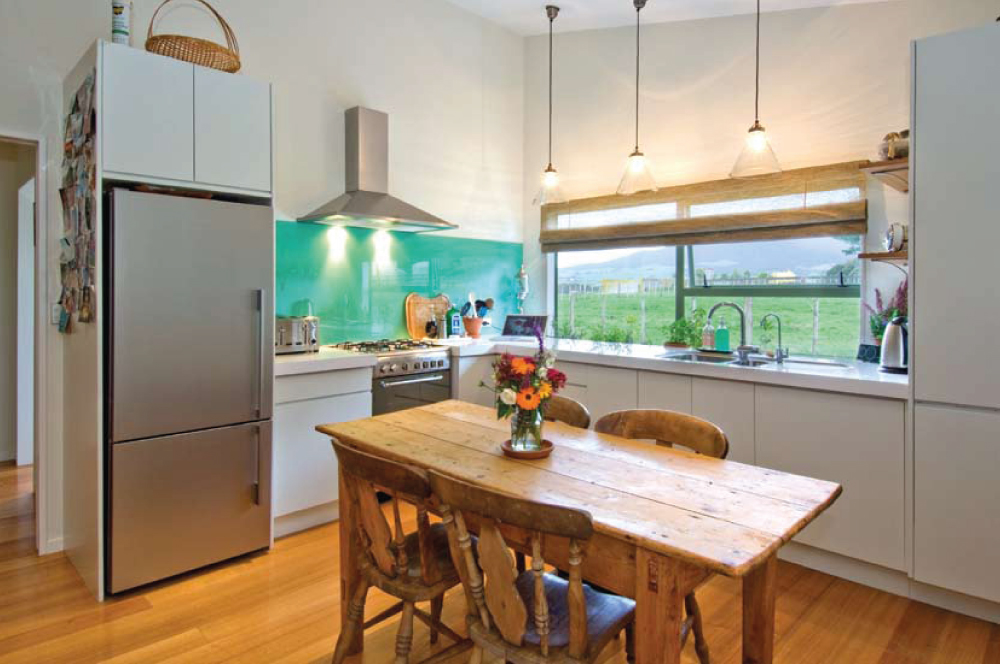
 When Matthew and Rebecca Taggat found a picturesque rural section in Raglan with a view to the Coast, it was love at first sight. The only problem was that they were not quite ready to build their “dream home”. The spot where they ultimately plan on building faces out to the nine acres of native bush that is part of their section, but for the interim, they decided a renovation was in order. A TotalSpan shed already on the site piqued their interest, and the renovation that ensued is testament to their creative vision from the beginning. At the time they embarked uponthe renovation, Rebecca was pregnant with
When Matthew and Rebecca Taggat found a picturesque rural section in Raglan with a view to the Coast, it was love at first sight. The only problem was that they were not quite ready to build their “dream home”. The spot where they ultimately plan on building faces out to the nine acres of native bush that is part of their section, but for the interim, they decided a renovation was in order. A TotalSpan shed already on the site piqued their interest, and the renovation that ensued is testament to their creative vision from the beginning. At the time they embarked uponthe renovation, Rebecca was pregnant with
youngest daughter Ruby (now 10 months) and Milla was not yet one year old. Perhaps that was what spurred builder Daniel Klinkenberg of Urban Residential Developments Ltd into gear! From start to finish, Daniel took only three months to complete the transformation, and finished on the exact day he had specified in the contract. “We were
so impressed,” says Rebecca. “On the morning he finished, Daniel had cleaners in the house,and when he passed us the keys that afternoon, everything was perfect.”The revamped shed is still classified as an auxiliary building, to comply with local council regulations, and with that classification came some restrictions. The living area could be
no more than 70 square metres, plus three bedrooms and an office for Matthew. “There are some very clever design features,” says Rebecca. “For instance the roller door is still in place, kept high up and out of the way, but glass sliders in the same position really open the house up.” One thing that has changed drastically behind the scenes of the dwelling is the level of insulation. It had to be warm and healthy for the family of four, and the insulation instantly made the home more energy efficient. Rebecca and Matthew were pleased that Daniel put in “as much insulation as possible,” as well as double glazing
throughout. Another important part of the renovation was a new roof. The original was termed as a “shedding roof”, and the Taggarts wanted the safety of a residential grade alternative. To transform the shed into a home, extensive measures were taken, particularly across the front of the façade. “The whole face of the shed changed, but we stuck with iron on the other sides.” Cedar cladding softens the exterior, and Kwila decking helped to create an outdoor room. This is where the Taggart family spend most of their time in summer, in the sun and looking out toward the native bush.The interior is very light and
open, and belies the actual dimensionsof the home. A mainly white colour selection keeps each room spacious, as does the high pitch of the ceilings. Resene colour Alabaster is the shade throughout the house, with the ceilings in Resene Rice Cake. A soft Tasmanian Oak
floor also adds warmth, while keeping the feel light and airy.
MATERIALS
BEFORE & AFTER The former shed was once part of a large paddock in
which cows roamed, before it received
a comprehensive make-over to transform it into a family home.
FURNITURE Found on Trade Me, this feature chair adds a contemporary
feel with its modern patterned fabric.
KITCHEN HERB BOX In order to comply with local council regulations, a
recess had to be in place between the windowsill and the kitchen
bench. The result was a living herb garden, which fills the recess
perfectly.
FIRE With its radiant design the Metro H.T series wood burner is great
for heating open plan spaces. Finished
in metallic black high temperature paint, with a cooktop surface, this
fire is a great all rounder.
DIRECTORY
BUILDER
Urban Residential Developments Ltd
0275 397 005
www.urbanrd.co.nz
BATHROOMWARE
Michel Caesar www.michelcesar.co.nz
KITCHEN
Plain & Fancy Kitchens and Cabinets
07 847 4563
FIREPLACE
Metro Fires www.metrofires.co.nz
FLOOR BOARDS
Cedar Corp
0800 423 327
www.cedarcorp.co.nz
TILING
Brett Bateman Tiling
0800 4 47688
Homestyle, August/September, pg 52-56
Detached buildings
Exemption (i) of Schedule 1
A building consent is not required for the following building work:
- (i) building work in connection with any detached building (except a building that is required to be licensed in terms of the Hazardous Substances and New Organisms Act 1996 or a building closer than its own height to any residential accommodation or to any legal boundary) that-
- (i) houses fixed plant or machinery, the only normal visits to which are intermittent visits for routine inspection and maintenance of that plant or machinery; or
- (ii) into which, or into the immediate vicinity of which, people cannot or do not normally go; or
- (iii) is used only by people engaged in the construction or maintenance of another building for which a building consent is required; or
- (iv) does not exceed 1 storey, does not exceed 10 square metres in floor area, and does not contain sanitary facilities or facilities for the storage of potable water, but may contain sleeping accommodation (without cooking facilities) if the detached building is used in connection with a dwelling.
Bomun’s Photostream
EKOKIT is a range of self-build eco houses that have been specifically designed to be flexible, sustainable and within the price reach of ordinary New Zealanders.
EKOKIT homes can be built anywhere in New Zealand, under the supervision of a Licensed Building Practitioner. If you don’t wish to manage your EKOKIT build yourself your EKOKIT is also available as a complete finished home through Planet Homes.
via EKOKIT – from Ebode & Hybrid Homes.
ArtBox aims to provide exhibition and retail space for approximately 100 Christchurch artists, craft practitioners and design retailers who have lost workspace and outlets, through the creation flexible and portable modules, all of which have been locally designed and manufactured.
The project, instigated by CPIT in conjunction with Christchurch firm F3 Design, will begin with 18 modules being placed in and around the CPIT campus, with the hope that with the community’s support it can branch out to support a River of Arts throughout the city.
Pippin Wright-Stow, who co-owns F3 Design with his sister Ella, said the idea was spearheaded by F3 Design employee Andrew Just, who also lectures at CPIT’s architecture school.
The ArtBox modules are a 2.9m cube that allow for the creation of comfortable and highly adaptable spaces. They can be stacked, oriented and arranged in various practical configurations, insulated with wool, and are weather-tight. And because the modules are based around a steel hollow section frame, Wright-Stow said they have are very strong and have the ability to resist loads placed by earthquakes.
They’re not designed for one-off use either. Their unique design allows for multi-functional and multi-purpose use across a number of industries, from artists and jewellers to craftspeople and education institutions, as well as festivals and events.
“The idea is that they can be on-sold and used as commercial or residential dwellings,” said Wright-Stow.
Featuring interchangeable wall and flooring panels, the boxes can be placed on any surface, including concrete and grass.
via Architects and engineers collaborate in solution for displaced artists and designers
Here at SPACE we love micro dwellings. Those small buildings that are woven intrinsically into the culture and character of New Zealanders.
A room of one’s own. A private SPACE. A quiet retreat. All are vital elements that contribute to our well being.
more info >>> Space Moveable Rooms.





